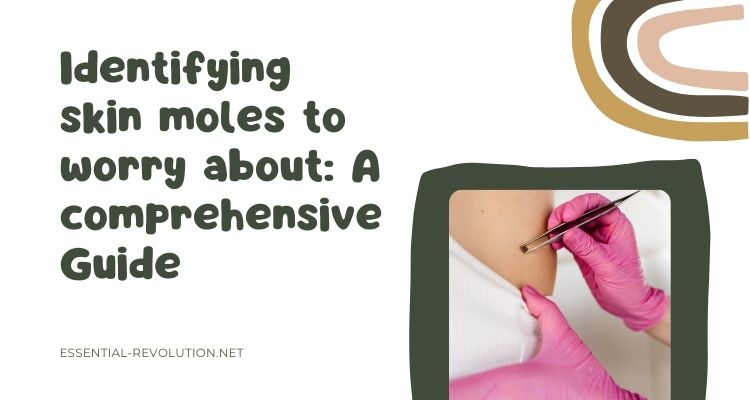When it comes to skin health, knowing which skin moles to worry about can make a significant difference in early detection.
Understanding Skin Moles
Skin moles, medically known as nevi, are common growths on the skin that typically appear as small, dark brown spots caused by clusters of pigmented cells. Most moles are harmless, but some can develop into melanoma, a serious form of skin cancer. It’s crucial to differentiate between normal moles and skin moles to worry about.
Normal vs. Atypical Moles
Normal Moles
- Appearance: Usually uniform in color, often brown, black, or tan.
- Shape and Size: Generally round or oval and smaller than 6mm (about the size of a pencil eraser).
- Texture: Can be flat or raised, smooth or rough.
Atypical Moles (Dysplastic Nevi)
- Appearance: May have a mix of colors including brown, black, red, or pink.
- Shape and Size: Often irregular in shape, larger than 6mm, and can have blurred or uneven borders.
- Texture: May feel different from normal skin, sometimes rough or scaly.
Atypical moles are skin moles to worry about because they have a higher likelihood of developing into melanoma.
The ABCDE Rule
The ABCDE rule is a helpful guideline to identify skin moles to worry about. Each letter stands for a characteristic to watch for:
- A for Asymmetry: One half of the mole does not match the other half.
- B for Border: The edges are irregular, scalloped, or poorly defined.
- C for Color: The color is not uniform and may include different shades or patches.
- D for Diameter: The mole is larger than 6mm, although melanomas can sometimes be smaller.
- E for Evolving: Any change in size, shape, color, or elevation, or any new symptom such as bleeding, itching, or crusting.
Other Signs of Concern
While the ABCDE rule covers the main aspects, there are additional signs indicating skin moles to worry about:
- Itching or Pain: Moles that itch or are painful.
- Bleeding or Oozing: Moles that bleed, ooze, or form a crust.
- Inflammation: Redness or swelling beyond the mole’s border.
- New Moles: Any new moles appearing after the age of 30 should be evaluated by a healthcare professional.
Risk Factors for Melanoma
Certain factors increase the risk of melanoma, making vigilance about skin moles to worry about even more crucial:
- Fair Skin: Less melanin means less natural protection from UV radiation.
- Sunburns: Especially blistering sunburns during childhood.
- Tanning Beds: Artificial UV radiation is equally harmful.
- Family History: A family history of melanoma increases risk.
- Multiple Moles: Having many moles or atypical moles increases risk.
- Weakened Immune System: Conditions or medications that weaken the immune system.
Preventive Measures
To reduce the risk of melanoma and identify skin moles to worry about early, consider these preventive measures:
- Sun Protection: Use sunscreen with at least SPF 30, wear protective clothing, and seek shade during peak sun hours.
- Regular Skin Checks: Perform monthly self-exams and schedule annual check-ups with a dermatologist.
- Avoid Tanning Beds: The risks far outweigh any cosmetic benefits.
When to See a Dermatologist
It’s essential to consult a dermatologist if you notice any skin moles to worry about. Dermatologists can perform a thorough examination, and if necessary, a biopsy to determine if a mole is cancerous. Early detection significantly improves the prognosis for melanoma.
Final words about skin moles to worry about
Understanding which skin moles to worry about is vital for early detection and treatment of melanoma. So, by familiarizing yourself with the characteristics of normal and atypical moles, using the ABCDE rule, and being aware of additional warning signs and risk factors, you can better monitor your skin health. Regular dermatological check-ups and sun protection are crucial steps in safeguarding against skin cancer. Stay vigilant and proactive to ensure your skin remains healthy.

